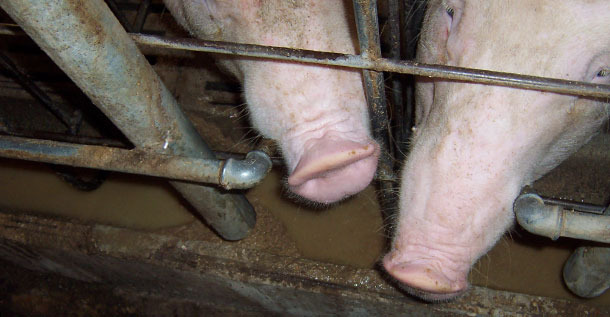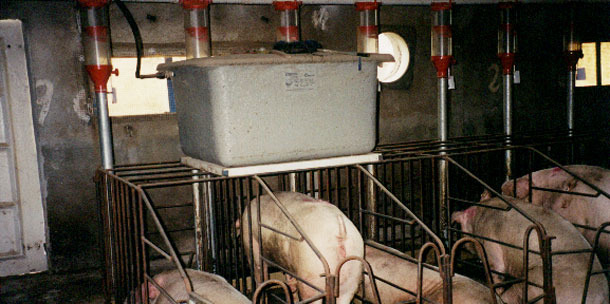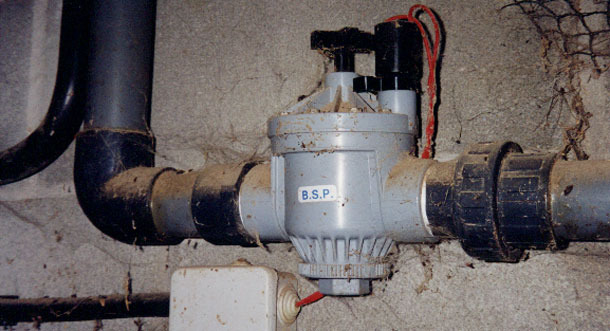Goal
Provide enough water to the pregnant sows and stimulate its intake.

Explanation
One of the main causes of death of the sows is kidney problems. Much of the problem is solved with an appropriate water supply.
If the water supply is through nipple drinkers, this has the advantage that water is consumed at will. The problem is that during the critical moments, such as the meal times, in which all the sows want to drink at the same time, the supply is not enough.

It does not matter how much flow the system has: when all the sows start to drink at the same time, the system collapses.
This problem can be solved, in part, with a continuous feeding trough and a buoy that keeps the water level constant, but if there are remains of feed, the situation becomes complicated again, because with dampness it ferments and becomes rancid, acquiring a bad flavour.
The sows' sense of taste and smell are very well developed, so, due to the bad taste, they stop eating and drinking, and the feed trough stays dirty.
The continuous presence of water in the feed trough does not stimulate drinking.
An alternative is to open the water flow several times a day, with the problem that when all the lines are opened the system collapses.

An alternative is to put a tank, as if it were a cistern, above each line of gestation crates. Every time we want to give water to the sows we open the tanks. By providing water several times a day we stimulate the sows to get up, drink and urinate.
The tank is filled after each discharge and a buoy stops its filling when it is full.
Related advantages:
- When the tank is emptied suddenly, the water that comes down like a cascade cleans the possible remains of food in the feed trough.
- It is feasible to medicate water in the case of certain groups of sows.
The emptying can be made manually or automatically with a solenoid valve programmed with a clock.





